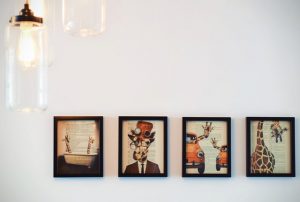Running a museum can be challenging at times, but there are many business factors you should consider within the museum field when setting up a museum or exhibition. In this article, we share some advice on starting up, and running a museum business.
There are many business factors that come into place when setting up your business. One major factor that may  present difficulties could be bringing together a group of directors for your museum. When forming your group, start small! You need just five dedicated men and women. They ought to have a love of local history and hopefully some experience serving on a board of directors. It is ideal to have a balance of ages and ability. If there are more than five interested people, remind them that there will be need of their services in significant near-future positions. Remember to include all of your directors to every meeting, and never turn down volunteer assistance. Volunteers are special people willing to talk about their time and ability and have to be appreciated with respect, however small their contribution could be it all helps. Everyone’s efforts are just as important to the success of your company. Choose a cozy meeting site and time and duration. And yes, the shorter the meetings, the more they appear to be effective of people’s time. Don’t forget to plan, and have a written schedule agreed upon by the group in advance of your meeting.
present difficulties could be bringing together a group of directors for your museum. When forming your group, start small! You need just five dedicated men and women. They ought to have a love of local history and hopefully some experience serving on a board of directors. It is ideal to have a balance of ages and ability. If there are more than five interested people, remind them that there will be need of their services in significant near-future positions. Remember to include all of your directors to every meeting, and never turn down volunteer assistance. Volunteers are special people willing to talk about their time and ability and have to be appreciated with respect, however small their contribution could be it all helps. Everyone’s efforts are just as important to the success of your company. Choose a cozy meeting site and time and duration. And yes, the shorter the meetings, the more they appear to be effective of people’s time. Don’t forget to plan, and have a written schedule agreed upon by the group in advance of your meeting.
Next, decide just how you want to word your purpose for organizing. Some examples of important words could be ” mandate, educate, illustrate, display, notify, provide, establish, home, screen, protect, study, conserve,” etc. Whatever your purpose, the best way to say it becomes your “Mission Statement“. It needs to be short, sweet, yet have an appeal to people from whom you might seek out support. The team should avoid being too specific and not blend aims, objectives or methods from the assignment statement. In your next meeting, you might want to begin talking goals and processes for meeting your goals, to be followed by relevant meetings.
When deciding on your layout of art display showcases, you really should be creating a plan! Knowing where the artwork goes, prior to installation is so important, as when you proceed to exhibition installation, you want to make sure you have a layout of your artwork and where it will be shown. Take into account the type of artwork, visibility, and which audience you will be appealing to. Hanging art properly is essential if you would like to take complete advantage of your investment.
There are other methods of hanging art showcases than simply getting to “eye level”. Many people like to use their judgment on where they would prefer the art to be put, so far as the height from a mantle, over a sofa, in a stairwell, etc. So long as you are aware of where you would like the art to be placed, it’s simply a matter of finding the height you’d like to put above something else (chest, seat, credenza, piano, etc.). Equally important is finding a centre for your positioning. Frequently there are lots of variables of how to “center” your artwork. You might have your sofa situated against a wall with a side table to its side and the sofa might not be centered. You’ll have to decide if you have to have the artwork centered on the wall irrespective of the sofa, or use the sofa as a centering tool. It might be tricky because you might have beams on your ceiling that throw off the positioning, but that’s once again a judgment call.
When in doubt, create a template of how big your art and set it where you feel you might prefer to hang your image. This gives you a sense of distance, centering, height and distance that will let you avoid holding up big heavy art. To maintain up your template, you can use artist’s masking tape, which is less tacky than standard masking tape and probably won’t remove paint or wallpaper. Remember these handy tips when starting up an exhibition, or museum!
